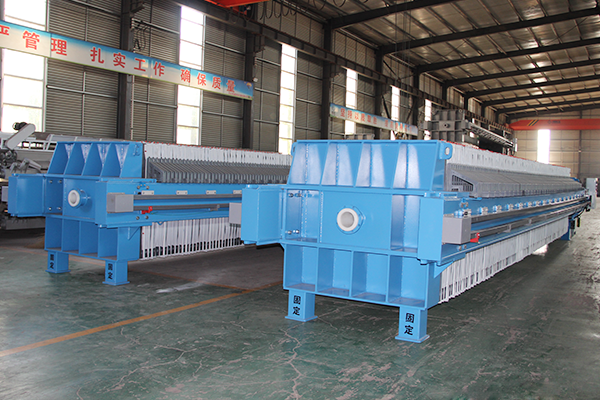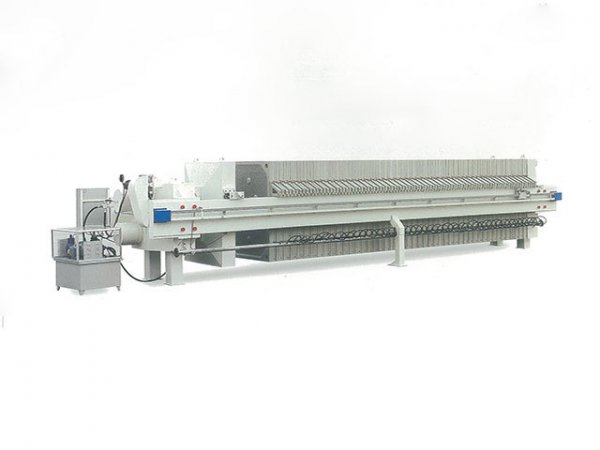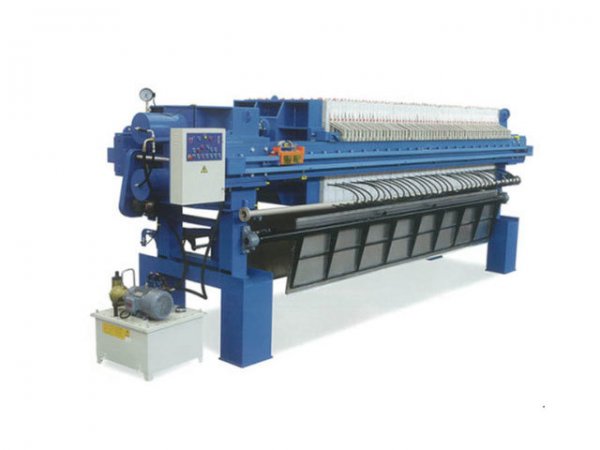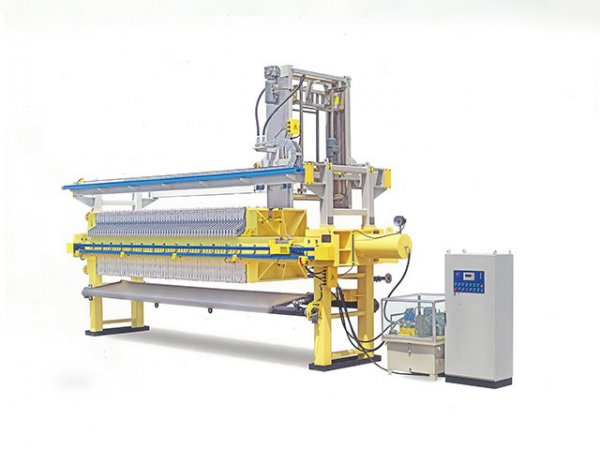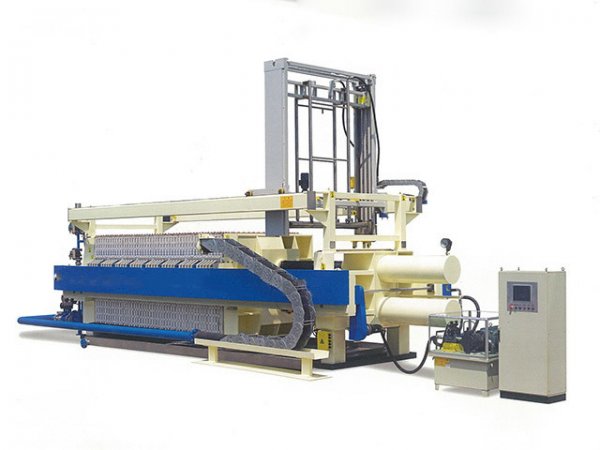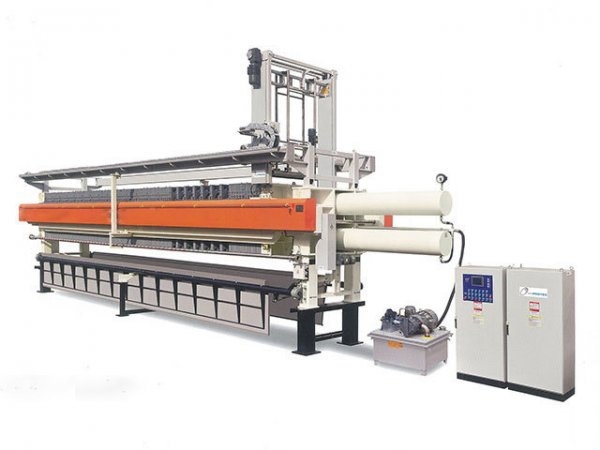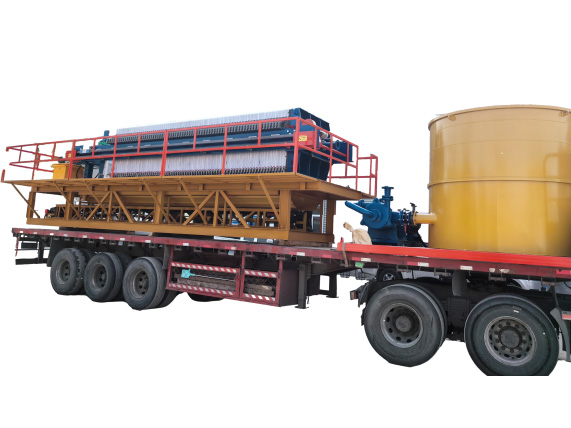NewsDetails
The Importance and Operational Guide for Regular Maintenance of High-Pressure Diaphragm Filter Press
author:Shuangcheng time:2025-05-24 09:02:34 Click:119
In the industrial solid-liquid separation process, the High-Pressure Diaphragm Filter Press stands out as a core piece of equipment on many production lines due to its efficient filtration performance. However, during prolonged operation, the equipment inevitably experiences component wear and performance degradation. At this juncture, regular maintenance becomes crucial, as it not only affects the equipment's operational efficiency but also directly impacts the enterprise's production costs and safety.
I. Introduction
1.1 Raising the Issue
In industrial production, the stable operation of solid-liquid separation equipment is pivotal for ensuring a smooth production process. Although the High-Pressure Diaphragm Filter Press boasts efficient filtration capabilities, prolonged use without scientific maintenance can lead to issues such as filter plate blockages, insufficient pressure, and seal failures, thereby affecting production progress.
1.2 Highlighting the Theme
This article elucidates the significance of regular maintenance of the High-Pressure Diaphragm Filter Press in maintaining its efficient filtration performance and extending its service life, introducing the core content of the article—the importance and operational methods of maintenance.
1.3 Briefly Stating the Significance
Regular maintenance of the High-Pressure Diaphragm Filter Press plays a positive role in enhancing industrial production efficiency, reducing equipment repair costs, and mitigating environmental pollution risks, underscoring the necessity of maintenance work.
II. Basic Understanding of High-Pressure Diaphragm Filter Press
2.1 Definition and Structure
The High-Pressure Diaphragm Filter Press achieves solid-liquid separation by constructing an enclosed space with filter plates. The filter plates primarily consist of a filter plate body, an expandable diaphragm layer, a material feed inlet, and a filtrate discharge outlet. The filter plate body provides structural support, the diaphragm layer is key to achieving efficient squeezing and dewatering, and the feed inlet and filtrate outlet ensure the orderly transmission of material and filtrate, respectively.
2.2 Working Principle
During operation, the material enters the filter chamber through the feed inlet. Under pressure, the liquid passes through the filter cloth and exits via the filtrate outlet, while solid particles are retained to form a filter cake. Subsequently, a fluid medium is introduced into the diaphragm layer, causing it to expand and squeeze the filter cake, further reducing its moisture content and achieving high-precision solid-liquid separation.
III. The Importance of Regular Maintenance
3.1 Maintaining Efficient Filtration Performance
With prolonged use, the filter plate surface tends to retain material residues, and the filter cloth may become clogged, affecting filtration efficiency. Regular maintenance can promptly remove impurities, ensuring the permeability of the filter plates and filter cloth, thereby maintaining the equipment's efficient filtration capabilities.
3.2 Extending Equipment Service Life
Through regular inspections and maintenance, potential issues such as filter plate wear, seal aging, and hydraulic system leaks can be promptly identified and repaired or replaced, preventing minor faults from escalating into major damages and effectively extending the equipment's service life.
3.3 Reducing Production Safety Risks
Abnormal wear or aging of equipment components may lead to safety incidents such as pressure runaway and filter plate rupture. Regular maintenance can eliminate safety hazards, ensuring the safety of the production process and avoiding personnel injuries and property losses caused by equipment failures.
3.4 Saving Production Costs
Regular maintenance reduces downtime due to equipment failures and lowers the costs associated with frequent repairs and component replacements. In the long run, it can significantly save production costs for enterprises and enhance economic efficiency.
IV. Key Factors Influencing Maintenance Effectiveness
4.1 Material Characteristics
Different filter plate materials require different maintenance focuses. For instance, polypropylene filter plates should avoid contact with strong oxidizing substances, while rubber filter plates should be protected from scratches by sharp objects. Understanding material characteristics is essential for formulating targeted maintenance plans.
4.2 Process Parameters
Improper settings of process parameters such as pressure, temperature, and filtration time can accelerate equipment wear. During maintenance, it is necessary to check whether components have excessive wear due to abnormal parameters and adjust parameter settings promptly based on the equipment's operational parameters.
4.3 Operating Environment
A humid, high-temperature, or dusty environment can accelerate equipment aging. Taking protective measures according to the operating environment, such as adding dust covers and implementing moisture-proof treatments, is crucial for the effectiveness of maintenance.
V. Operational Guide for High-Pressure Diaphragm Filter Press Maintenance
5.1 Daily Inspection and Cleaning
Filter Plates and Filter Cloths: After each use, inspect the filter plate surface for cracks or wear, clean the residues on the filter plates and filter cloths to prevent material from drying and blocking the filtrate channels. If the filter cloth is damaged or clogged, clean or replace it promptly.
Seals: Check the elasticity and sealing performance of the seals, observe for signs of aging, deformation, or poor sealing, and replace them if necessary to prevent material leakage.
Equipment Surface: Wipe the equipment surface to remove dust and stains, keeping it clean to avoid damage caused by impurities entering the equipment.
5.2 Regular In-Depth Maintenance
Hydraulic System Maintenance: Regularly check the oil level and quality of the hydraulic oil. Replenish it when the oil level is insufficient and replace it when the oil quality deteriorates. Inspect the hydraulic lines for leaks or damage to ensure stable hydraulic system pressure.
Component Tightening and Lubrication: Check the connection tightness of various equipment components and tighten loose bolts and nuts. Add lubricating oil or grease to lubricated parts as specified to reduce component friction and wear.
Performance Testing: Regularly test the equipment's performance indicators such as pressure and filtration efficiency, analyze its operational status, and promptly identify and repair causes of performance degradation.
5.3 Maintenance for Long-Term Shutdown
If the equipment needs to be shut down for an extended period, thoroughly clean the residual material inside the equipment, rinse and dry the filter plates. Conduct a comprehensive inspection and maintenance of the equipment components, apply anti-rust agents to prevent rusting. Disconnect the power supply, implement dust-proof and moisture-proof measures for the equipment, and conduct periodic test runs to ensure normal operation upon restart.
VI. Conclusion
6.1 Summarizing Key Points
Review the crucial roles of regular maintenance of the High-Pressure Diaphragm Filter Press in maintaining performance, extending service life, ensuring safety, and saving costs, as well as the key operational points for daily inspections, regular in-depth maintenance, and maintenance for long-term shutdowns.
6.2 Looking Ahead
With the development of industrial intelligence, the maintenance of High-Pressure Diaphragm Filter Presses will evolve towards intelligent monitoring and predictive maintenance. Through sensors and data analysis, potential equipment issues can be identified in advance, enabling more efficient maintenance.
6.3 Calling for Action
Encourage enterprises to attach importance to the regular maintenance of High-Pressure Diaphragm Filter Presses, formulate scientific maintenance plans, standardize maintenance operational procedures, fully leverage the equipment's performance, and provide strong guarantees for the stable production and sustainable development of enterprises.
The above article systematically elaborates on the importance and operational methods of maintaining the High-Pressure Diaphragm Filter Press. If you feel that certain parts need optimization or wish to add specific content, please feel free to communicate.
 Recommended Products
Recommended Products
 Contact us
Contact us
—— Contact:Manager
—— Tel:+86 16632826789
—— Email:sales@hbscfilterpress.com
—— Url:https://www.hbscfilterpress.com
—— Address:West Zone of Economic Development Zone, Fucheng County, Hengshui City, Hebei Province

